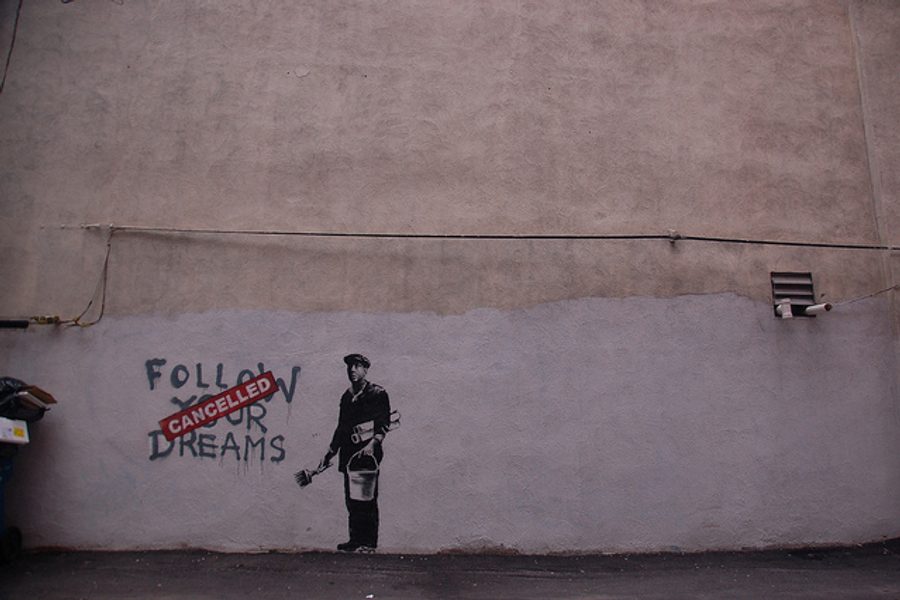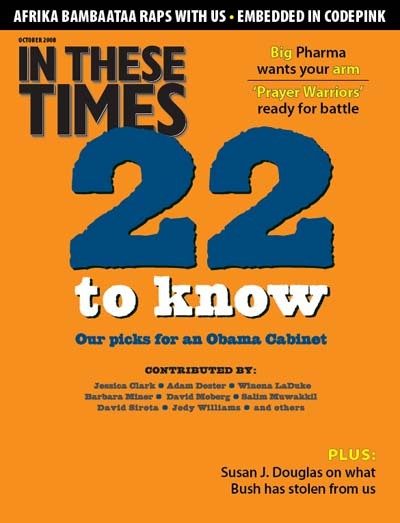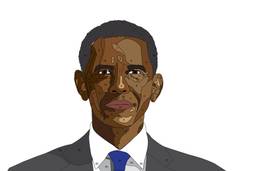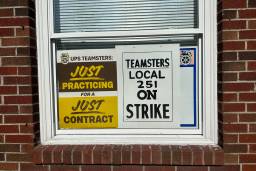
When Anthony Haydin woke up on June 30, he did not imagine his street would be the scene of one of Chicago’s most deadly shootings. Three people had been shot in an apartment right across the street from his. Police said the victims had been murdered in a “gang-and-drug related shooting.”
On July 13, just hours after guns claimed the lives of three more people in separate incidents, the Rev. Robin Hood, a Chicago community activist, lashed out.
“No one should be surprised by all this shooting going on in Chicago,” he said. “Our schools are crumbling, young people – especially young black people – have no jobs and don’t have any hope. Politicians don’t want to bring good jobs or make businesses pay us a decent wage. What do you expect?”
After a 30 percent decline in the last decade, gun-related violence is again on the rise in many urban centers, with a disproportionate impact on young black males. On July 20, the weekly Chicago Defender reported that gang activity is playing a role in the escalation of gun violence. This summer, the paper noted, “Several teens on the South Side were gunned down, apparently caught in gang crossfire.” The paper described the “makeshift memorials of balloons, stuffed animals, flowers and poster boards with written sentiments” that have become commonplace on South Side streets.
But gun violence, like other ills plaguing urban communities, is a symptom of economic problems that have festered for decades.
In his 1996 book When Work Disappears, Harvard sociologist William Julius Wilson wrote: “Many of today’s problems in the inner-city ghetto neighborhoods – crime, family dissolution, welfare, low levels of social organization and so on – are fundamentally a consequence of a disappearance of work.”
Wilson argues that the loss of jobs, and the resulting increase in unemployment, leads to the breakdown of the social and cultural institutions that hold a community together.
After nearly 30 years of conservative discourse that promotes incarceration as the solution, local governments must resuscitate the idea that jobs and economic revival are the antidotes to crime. Such a revival is needed – and possible, given favorable political winds – because a confluence of factors is exacerbating the turmoil in inner cities, with disastrous implications.
Neoliberal cities
As economic prospects worsen, low-income Americans are getting desperate. Unemployment is chronic – 40 percent of black males are jobless – and the federal safety net is vanishing.
America’s big cities have failed to lift their inner-city communities out of poverty.
Jason Hackworth, a professor of geography and urban planning at the University of Toronto, blames neoliberalism, which he defines as “an ideological rejection of egalitarian liberalism.” In The Neoliberal City, a study of Chicago, New York City, Phoenix, Seattle and other cities, Hackworth maintains that neoliberal economic policies – gentrification, spending cuts, corporate tax giveaways, low wages and privatization – have left longtime and low-income residents defenseless in a hostile economic landscape.
Add to this mix a gun industry newly energized by the Supreme Court – whose D.C. v. Heller decision overturned Washington, D.C.’s ban on handgun possession – and urban gun violence becomes an immediate threat.
Desperation and violence
Interest in the reciprocal relationship between violence and economic deprivation is not new. Writing in the American Sociological Review in 1938, famed sociologist Robert King Merton noted that people who are denied access to the legitimate means of achieving “our culturally legitimated goal of financial success” may turn to illegitimate means to reach that goal.
Decades later, not much has changed.
Amartya Sen, the 1998 Nobel Prize-winning economist, wrote in Development as Freedom:
There is plenty of evidence that unemployment has many far-reaching effects other than loss of income, including psychological harm, loss of work motivation, skill and self-confidence, increase in ailments and morbidity (and even mortality rates), disruption of family relations and social life, hardening of social exclusion and accentuation of racial tensions and gender asymmetries.
In other words, what we are seeing in America’s urban centers is desperation being played out in violent activity. And if there is going to be long-term, sustainable solutions, Americans must demand a more honest and comprehensive analysis of gun violence – and crime in general.
City leaders have responded by marshalling law enforcement, calling for better parenting and pushing “personal responsibility.” Politicians have also asked community “partners” – crime prevention and awareness groups such as CeaseFire in Chicago – to mobilize. These groups educate residents about violence prevention, hold rallies to pressure lawmakers and conduct direct intervention through peer counseling and mentoring programs.
In April, after 40 people in Chicago were shot – 12 killed – in one week, Mayor Richard M. Daley convened an emergency summit with police, community leaders and religious leaders, to address gun violence.
At a May 10 press conference, the mayor railed against the gun lobby and lectured parents on taking responsibility for their children: “We live in a society that seems to downplay the importance of parental or adult responsibility.” Based on the location of the shootings, the mayor clearly was addressing African-American parents.
But the violence has grown only worse. According to the Chicago Tribune, for the first seven months of 2008, murders rose 18 percent over the same period in 2007 – from 246 deaths to 291. Murders rose 9 percent – or up from 266 deaths – over the same period in 2006. In July 2008 alone, the death toll was 62.
Daley’s response was notable for what it lacked – any acknowledgment that many black families are caught in a low-wage economy, and that the nation’s most violent neighborhoods also suffer the highest unemployment.
In his 2002 study of world gangs, Missouri State University criminologist and social researcher Michael Carlie wrote that gang-dominated neighborhoods in the United States “may be characterized as having a disproportionate number of residents who are unemployable, unemployed or underemployed.” Such neighborhoods, he noted, “are characterized by a lack of economic opportunities, poverty, inadequate city services, struggling school systems and are home to a significant segment of the city’s minority populations.”
According to the Illinois Department of Employment Security, black unemployment in Chicago stands at 10.9 percent, five times that of whites and one of the highest in the country. The national unemployment rate is 6.1 percent.
A national pattern
In 2007, when Baltimore achieved the status of second deadliest city in the nation, government and civic leaders mobilized.
Mayor Sheila Dixon formed a task force on illegal guns and installed a system that tracks guns that have been used in crimes. Her crime-fighting strategy centered on four basic steps: report a crime, prevent a crime, track crime, speak out. Dixon’s “prevention,” however, involves programs such as “operation crime watch” and “start-a-citizens-on patrol,” but no mention of good jobs.
Like Chicago, Baltimore is embroiled in a protracted debate about the economic direction of the city. Labor and community groups oppose development policies that favor big business and ignore community interests. Business groups want to direct city resources into the downtown area for development projects, such as parking garages, luxury housing, retail and conversion of abandoned factories into high-tech office space.
Led by UNITE HERE!, a coalition called Baltimoreans’ Forum on Responsible Development emerged to challenge the city’s use of public funds to finance private development. On July 29, the group held its first meeting. “The community response has been great” Jessica Turner, a union research analyst who helped to organize the meeting, told the Baltimore Sun. “We had more than 100 community members, and I think four city council members.”
Residents testified in opposition to city subsidies for a redevelopment project planned for Westport, a working-class neighborhood in South Baltimore. They also attacked plans for City Center – a $750 million downtown hotel, condo and retail complex slated for completion in 2012.
Greg LeRoy, executive director of Good Jobs First, a national nonprofit research group that promotes “smart growth” and “accountable development,” decried the city council for not “linking these big downtown developments to tangible benefits in the neighborhoods.”
In its study of Baltimore’s development strategy, Good Jobs First noted that “the city has neglected to enact standards to ensure that the new tourism jobs are of high quality” and that most of the new jobs are low wage, part-time and “pay less than the federal poverty line for a family of four.”
In Philadelphia, the situation is not much different. Although the city’s aggressive law enforcement has helped reduce gun deaths – from 417 between August 2006 and July 2007, to 334 between August 2007 to July 2008 – community activists say that poverty and joblessness, complicated by a flood of guns, threaten the progress Philadelphia has made in reducing violence.
Fabricio Rodriguez, who heads Philadelphia Jobs With Justice, a national workers’ rights organization, says law enforcement and community intervention strategies do make a difference, but “they don’t deal with structural problems that impede change.” [Disclosure: I am the executive director of the Chicago chapter of Jobs With Justice.]
Rodriguez says that the city focuses too much on individualized job training programs. “These are useful,” he says, but “collective solutions that involve organized workers are both empowering and create lasting change.”
“We have to turn these service-sector jobs into good-paying jobs, and one way is to organize those workers. People should be able to enter the middle class working at Wal-Mart.”
Nowhere is the failure of urban politicians more evident than in their complicity in the false narrative – carefully orchestrated by corporate leaders – that service-sector jobs are inherently low wage. This claim is contrived to make it “unrealistic” for local communities to demand decent wages or persuade corporations to make community investments.
Indeed, the “low wage” narrative is increasingly difficult to make, especially in the era of obscene wealth and income gaps. A recent report by the Institute for Policy Studies and United for a Fair Economy, two nonprofit groups, showed that the average CEO of a large U.S. company made $10.8 million last year. That’s 364 times what the average worker made. Target Corporation Chairman and CEO Robert Ulrich alone made $20 million.
Same playbook
In the early 1900s, factory jobs – those now referred to as “good paying” manufacturing jobs – were the jobs of the poor. They were dangerous and dirty. But with unionization and changes in public policy, they became middle-class jobs.
Today, if cities are going to weather the economic storms engulfing the country, urban politicians must follow the same playbook. Nowhere is it written that people who work service-sector jobs cannot, or should not, earn enough to enter the middle class.
As the service sector grows, municipal officials must reevaluate their relationship with these employers, who are, in many respects, captive to the city. The service industry, which includes retail stores, hotels, parking garages and restaurants, is dependent upon the purchasing power of American consumers. Cities can – and must – require these employers to pay higher wages and recognize the right of workers to organize. That must be a cornerstone to any long-term crime-prevention strategy.
An outraged citizenry has the right to demand that elected officials do more than attend the funerals of their loved ones or send condolence cards. They must act aggressively to rebuild the employment infrastructure of abandoned neighborhoods, so as to prevent the lure of gangs and the lure of guns.
Jobs save lives.









